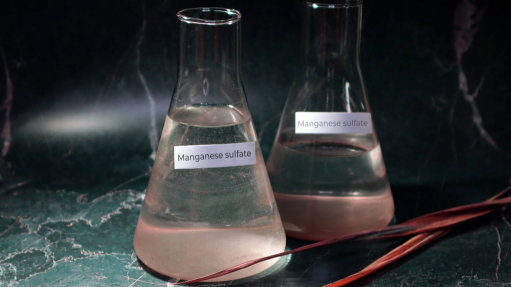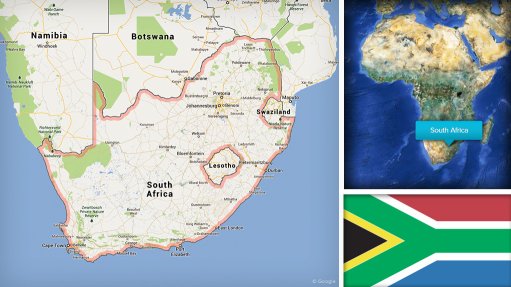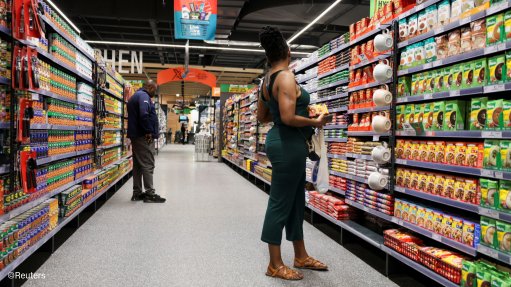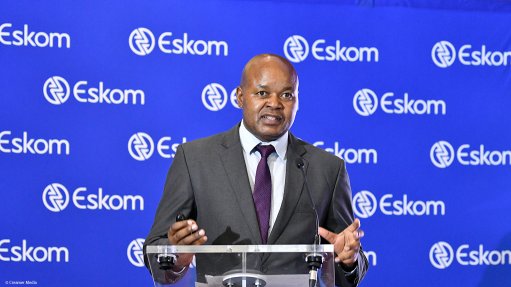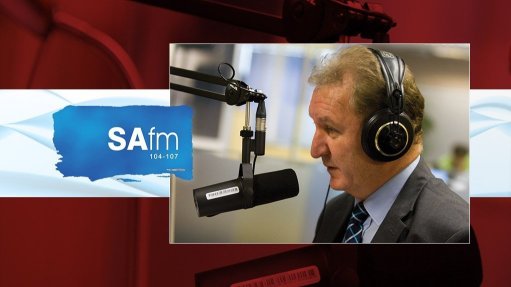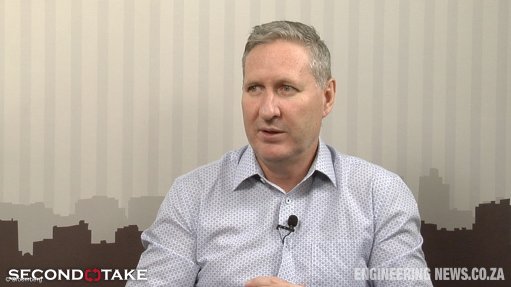Saville stresses importance of this year’s MTBPS
Cannon Asset Managers founder and CEO Dr Adrian Saville believes the upcoming Medium-Term Budget Policy Statement (MTBPS) might be the most important one for South Africa yet.
With a resurgence of load-shedding, crisis-level unemployment rates and economic growth teetering between 0% and 1%, government is running out of time and options to address the country’s challenges, he says.
Saville notes that real growth in gross domestic product was projected at 1.5% at the time of February’s Budget Speech, compared with 0.8% growth last year. However, the economy instead shrank by 3.1% in the first quarter of the year and GDP is now expected to be no higher than 0.6% this year.
“The difference between the forecast and actual economic growth figure translates into a tax receipt shortfall of some R60-billion for the tax year ending March 2020.
“Given that this shortfall is virtually across the board – including the three major categories of personal income tax, corporate income tax and value-added tax – Finance Minister Tito Mboweni will be hard-pressed to find ways to offset this deficit,” explains Saville.
Additionally, with ratings agency Moody’s set to deliver its next assessment directly after the MTBPS, on November 1, the stakes are high.
Moody’s has given South Africa the benefit of the doubt for a number of years – arguably for far too long, says Saville.
“If you add South Africa’s 6% budget deficit forecast and State-owned enterprise (SOE) debt obligations to South Africa’s debt-to-GDP number, we are comfortably in sub-investment grade status.
“However, although there is enough reason for Moody’s to downgrade South Africa’s investment rating, its most recent comments indicate that it will retain South Africa’s rating for the time being. But if – or even when – this view changes, the implications will be material,” Saville notes.
A sub-investment grade rating would immediately raise the cost of government debt in an environment where South Africa needs funding. It will also result in a significant number of funds leaving the country, translating into a weaker rand, higher interest rates and higher inflation.
South Africa needs to tackle a suite of challenges simultaneously, including eliminating corrupt and wasteful government spending; reducing current government spending, such as wages; resolving various SOE constraints; and growing the economy in a way that creates jobs and widens the tax base.
The State’s wage bill has risen steadily over the past few years without the necessary productivity materialising. “If South Africa does not reduce the public sector wage bill and resize and reorganise its SOEs now, so that they are stable and sustainable, the unemployment problem will only be exacerbated. The end result could well be that we soon find ourselves cap-in-hand before international credit agencies, who will force us to take the very measures we are currently trying to sidestep,” Saville says.
He adds that Mboweni’s draft policy paper offers a clear and concrete path to growing the economy. The paper is far-sighted with regard to where and what kind of economic growth and transformation the country can achieve in the coming decades, and offers practical and implementable steps to achieving this growth and transformation.
In addition, Saville points out that the policy paper is near-sighted – not short-sighted – in terms of the quick and easy “wins” that could get detractors onside, lending South Africa the near-term momentum needed to achieve its long-term goals.
“For example, if we roll out [broadband] spectrum, eliminate work and tourism visa restrictions and stabilise Eskom, we could see the kind of modest improvements in business confidence that would lead to moderate economic growth by this time next year.”
REFLECTING PRIORITIES
Meanwhile, South African Berry Producers Association chairperson Jean Kotze says the MTBPS is an opportunity for the National Treasury to align the budget with the country’s growth priorities.
For example, he mentions that one of the core barriers to expanding agricultural exports are the severe budgetary and capacity constraints at the Department of Agriculture, Land Reform and Rural Development.
Of the R7.1-billion allocated to the department in the 2019 budget, only R273-million was earmarked for trade promotion and market access. To compound matters, according to the latest annual report, the department is currently operating with a vacancy rate of 19.5%.
“With these budgetary and personnel constraints, it is not surprising that the processing of export protocols is taking anywhere from 12 to 17 years for one commodity to gain access to one market. Along with revenue and economic growth, these constraints are also stalling employment and skills development in the agricultural sector.
“Mboweni has an opportunity to ensure that the national budget reflects South Africa’s economic priorities. In particular, this is a chance for him to back up his economic strategy with the necessary departmental resources to make R6-billion in agricultural export growth a realistic, attainable goal,” says Kotze.
SPECIAL CONSIDERATION
Nonprofit organisation International Rivers spokesperson Siziwe Mota, meanwhile, comments that fiscal planning for the security of South Africa’s energy supply cannot ignore the looming, hidden cost of sourcing hydropower from the Democratic Republic of Congo (DRC).
The Inga 3 hydropower project was included in the newly-approved 2019 Integrated Resource Plan (IRP2019).
Mota notes that the costs of Inga 3 are expected to be crippling for South Africa. The IRP2019 envisages Inga 3 hydropower to South Africa coming on line in 2030.
“To date, there has been little to no engagement with the real and utterly unaffordable costs of Inga 3 for the South African fiscus, for ordinary South Africans, and for the Congolese communities that this megaproject will impact.
“On top of the existing burden imposed on taxpayers to bail out Eskom, the financial outlay required to construct the transmission line alone will cost South African consumers an estimated R4.3-billion a year. Additionally, transmission losses over such a long distance from the DRC to South Africa will be significant, making actual delivery of the expected 2 500 MW highly unlikely,” explains Mota.
He states that the power to be sourced from the DRC will cost South Africa R400-million a year more than domestic power generation, adding that the figure excludes “the likely increase in true cost after factoring in the cost overruns typical to megaprojects of this magnitude”.
Inga 3 was initially expected to begin providing power in 2020. This date has been moved back to 2024, with recent accounts shifting the date further back to 2030. Progress on Inga 3 has stalled repeatedly already, with no sign that the significant financial, governance and logistical hurdles have been cleared.
“By continuing to include Inga 3 in South Africa’s energy mix, the South African government is simply kicking the renewable energy can down the road instead of creating a truly robust energy plan.
“Mboweni must begin by justifying the cost in light of South Africa’s fiscal burden, and account to the public where the funding will come from.”
Comments
Press Office
Announcements
What's On
Subscribe to improve your user experience...
Option 1 (equivalent of R125 a month):
Receive a weekly copy of Creamer Media's Engineering News & Mining Weekly magazine
(print copy for those in South Africa and e-magazine for those outside of South Africa)
Receive daily email newsletters
Access to full search results
Access archive of magazine back copies
Access to Projects in Progress
Access to ONE Research Report of your choice in PDF format
Option 2 (equivalent of R375 a month):
All benefits from Option 1
PLUS
Access to Creamer Media's Research Channel Africa for ALL Research Reports, in PDF format, on various industrial and mining sectors
including Electricity; Water; Energy Transition; Hydrogen; Roads, Rail and Ports; Coal; Gold; Platinum; Battery Metals; etc.
Already a subscriber?
Forgotten your password?
Receive weekly copy of Creamer Media's Engineering News & Mining Weekly magazine (print copy for those in South Africa and e-magazine for those outside of South Africa)
➕
Recieve daily email newsletters
➕
Access to full search results
➕
Access archive of magazine back copies
➕
Access to Projects in Progress
➕
Access to ONE Research Report of your choice in PDF format
RESEARCH CHANNEL AFRICA
R4500 (equivalent of R375 a month)
SUBSCRIBEAll benefits from Option 1
➕
Access to Creamer Media's Research Channel Africa for ALL Research Reports on various industrial and mining sectors, in PDF format, including on:
Electricity
➕
Water
➕
Energy Transition
➕
Hydrogen
➕
Roads, Rail and Ports
➕
Coal
➕
Gold
➕
Platinum
➕
Battery Metals
➕
etc.
Receive all benefits from Option 1 or Option 2 delivered to numerous people at your company
➕
Multiple User names and Passwords for simultaneous log-ins
➕
Intranet integration access to all in your organisation






